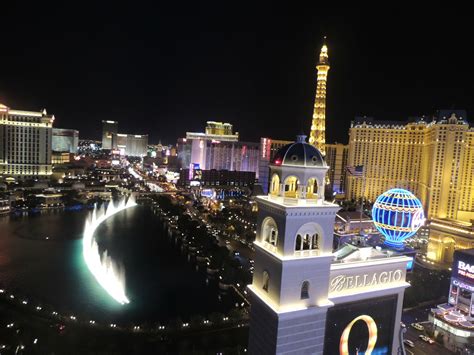
Las Vegas has officially earned the title of the most expensive tourist destination in the United States for the entirety of 2024, surpassing traditional high-cost cities like Honolulu and New York, according to a recent survey. This distinction is driven by a combination of high hotel rates, costly dining options, and elevated entertainment expenses, making Sin City a budget-busting location for travelers.
The study, conducted by a travel industry analysis firm, examined the average costs associated with a typical tourist visit, including accommodation, meals, transportation, and activities. Las Vegas consistently ranked highest across these categories, solidifying its position as the priciest U.S. destination. “Las Vegas has seen a surge in demand, driving up prices across the board,” stated a senior analyst from the firm. “The combination of high occupancy rates and premium entertainment options contributes significantly to the overall cost.”
The surge in Las Vegas’s tourism costs is particularly noteworthy considering its historical reputation as a relatively affordable destination, especially when compared to other major U.S. cities. While gambling and other forms of entertainment have always been central to the Las Vegas experience, the rising costs of non-gambling related activities, such as dining and shows, have played a significant role in its increased overall expense. “The diversification of Las Vegas’s offerings, including upscale restaurants and world-class entertainment, has attracted a more affluent clientele, further driving up prices,” the analyst added.
Factors Contributing to High Costs
Several factors contribute to Las Vegas’s status as the most expensive tourist spot. These include:
-
Hotel Rates: Las Vegas is known for its extravagant hotels, but these come with a hefty price tag. The average hotel room in Las Vegas is significantly more expensive than in other major U.S. cities. High occupancy rates, particularly during peak seasons and special events, further drive up prices. According to the study, the average nightly hotel rate in Las Vegas is “considerably higher” than in cities like Orlando or Chicago.
-
Dining Costs: Las Vegas boasts a diverse culinary scene, ranging from casual eateries to Michelin-starred restaurants. However, dining in Las Vegas is generally expensive, particularly on the Strip. “Dining out in Las Vegas can quickly eat into a tourist’s budget,” the analyst noted. “Even casual meals tend to be pricier than in other cities.” The presence of celebrity chefs and upscale dining establishments contributes to the higher average cost of meals.
-
Entertainment Expenses: Entertainment is a major draw for tourists visiting Las Vegas, but it also contributes significantly to the overall cost. Shows, concerts, and other forms of entertainment in Las Vegas are among the most expensive in the country. Tickets to popular shows can easily cost hundreds of dollars, and even less extravagant forms of entertainment, such as visiting attractions or attending pool parties, come with a significant price tag.
-
Transportation Costs: While Las Vegas is relatively easy to navigate, transportation costs can add up quickly. Taxis and ride-sharing services are readily available, but they can be expensive, particularly during peak hours. Rental cars are also an option, but parking fees at hotels and other attractions can be exorbitant. “Transportation costs in Las Vegas can be a significant expense, especially for tourists who plan to explore beyond the Strip,” the analyst explained.
-
Resort Fees: Many Las Vegas hotels charge mandatory resort fees, which can add a significant amount to the overall cost of accommodation. These fees typically cover amenities such as Wi-Fi, access to the fitness center, and use of the pool. However, they are often charged regardless of whether guests use these amenities. “Resort fees are a hidden cost that can catch tourists off guard,” the analyst cautioned. “They can add hundreds of dollars to the overall cost of a hotel stay.”
Comparison with Other Tourist Destinations
To provide context, the study compared the average cost of a tourist visit to Las Vegas with that of other popular U.S. destinations, including Honolulu, New York City, Orlando, and Chicago. The results showed that Las Vegas was significantly more expensive than all of these cities.
Honolulu, which has traditionally been considered one of the most expensive tourist destinations in the U.S., ranked second in the study. While hotel rates in Honolulu are comparable to those in Las Vegas, dining and entertainment costs are generally lower. New York City, another traditionally expensive destination, ranked third. While hotel rates in New York City can be high, there are also a wide range of affordable dining and entertainment options available.
Orlando, known for its theme parks and family-friendly attractions, ranked fourth. Hotel rates and dining costs in Orlando are significantly lower than in Las Vegas, making it a more affordable option for budget-conscious travelers. Chicago, a major metropolitan city with a rich cultural scene, ranked fifth. While hotel rates in Chicago can be high, there are also a wide range of affordable dining and entertainment options available, making it a more budget-friendly destination than Las Vegas.
Impact on Tourism
The rising costs in Las Vegas could have a significant impact on tourism to the city. While some tourists may be willing to pay a premium for the Las Vegas experience, others may choose to visit more affordable destinations. “The high costs could deter some tourists from visiting Las Vegas, particularly those on a tight budget,” the analyst predicted. “It could also lead to a shift in the type of tourist who visits Las Vegas, with a greater emphasis on high-spending travelers.”
However, Las Vegas has a strong brand and a unique appeal that may help it to weather the storm. The city is known for its world-class entertainment, luxury hotels, and vibrant nightlife, which continue to attract millions of visitors each year. “Las Vegas has a unique appeal that is hard to replicate,” the analyst noted. “It offers a combination of entertainment, luxury, and excitement that is not found in other destinations.”
Strategies for Saving Money in Las Vegas
Despite its reputation as an expensive destination, there are ways to save money in Las Vegas. Some strategies include:
-
Visiting During the Off-Season: Hotel rates and other costs tend to be lower during the off-season, which typically includes the summer months and the weeks before and after major holidays.
-
Staying Off the Strip: Hotels located off the Strip are generally less expensive than those located on the Strip.
-
Taking Advantage of Free Activities: Las Vegas offers a variety of free activities, such as walking the Strip, watching the Bellagio fountain show, and visiting the Fremont Street Experience.
-
Eating at Affordable Restaurants: There are many affordable restaurants in Las Vegas, particularly off the Strip.
-
Taking Public Transportation: Public transportation is a more affordable option than taxis or ride-sharing services.
-
Avoiding Resort Fees: Some hotels do not charge resort fees, so it is worth researching this before booking a room.
-
Looking for Package Deals: Package deals that include airfare, hotel, and activities can often be a more affordable option than booking each component separately.
-
Utilizing Loyalty Programs: Many hotel chains and casinos offer loyalty programs that can provide discounts and other benefits.
-
Groupon and Other Discount Sites: Check websites like Groupon for deals on shows, dining, and activities.
-
Happy Hour Specials: Many bars and restaurants offer happy hour specials with discounted drinks and appetizers.
Expert Opinions
Travel experts agree that Las Vegas has become increasingly expensive in recent years. “Las Vegas is no longer a budget-friendly destination,” said Sarah Jones, a travel blogger specializing in affordable travel. “Travelers need to be prepared to spend a significant amount of money if they want to enjoy the full Las Vegas experience.”
Other experts point to the changing demographics of Las Vegas visitors as a factor in the rising costs. “Las Vegas is attracting a more affluent clientele than it used to,” said Michael Smith, a travel industry analyst. “This is driving up prices across the board, from hotel rates to dining costs.”
Future Outlook
The future outlook for tourism costs in Las Vegas is uncertain. Some analysts predict that prices will continue to rise, driven by increasing demand and the city’s ongoing efforts to attract high-spending travelers. Others believe that prices may stabilize or even decline as more affordable destinations become more attractive to budget-conscious travelers.
“It is difficult to predict what will happen to tourism costs in Las Vegas in the long term,” the analyst from the travel industry analysis firm said. “However, one thing is certain: Las Vegas will continue to be a popular destination for tourists from around the world.”
Expanded Context and Background
Las Vegas’s evolution from a gambling-centric destination to a multifaceted entertainment hub has profoundly influenced its pricing structure. Initially, the city thrived on attracting visitors primarily for gaming, with comparatively lower costs for accommodations, dining, and other attractions. This strategy was designed to encourage extended stays and increased gambling revenue. However, in recent decades, Las Vegas has strategically diversified its offerings to appeal to a broader demographic, including families, business travelers, and luxury tourists.
The introduction of high-end hotels, celebrity chef restaurants, world-class entertainment venues, and upscale retail outlets has transformed the Las Vegas experience. This diversification has not only attracted a more affluent clientele but has also created a demand for higher-priced goods and services. Consequently, the city’s overall cost structure has increased significantly.
The impact of special events, such as conventions, conferences, and major sporting events, on Las Vegas’s pricing cannot be overstated. These events draw large crowds, leading to increased demand for hotel rooms, dining reservations, and entertainment tickets. During these peak periods, prices often surge, making Las Vegas even more expensive than usual.
The COVID-19 pandemic had a significant impact on the tourism industry, including Las Vegas. Initially, the city experienced a sharp decline in tourism as travel restrictions and social distancing measures were implemented. However, as the pandemic subsided, Las Vegas saw a resurgence in tourism, driven in part by pent-up demand and a desire for leisure travel. This increased demand has contributed to the rising costs in the city.
Furthermore, the rise of online booking platforms and travel aggregators has made it easier for consumers to compare prices and find deals. However, these platforms have also made it easier for hotels and other businesses to adjust their prices in response to changes in demand. This dynamic pricing can lead to fluctuations in costs, making it challenging for tourists to budget their trips.
Las Vegas’s unique regulatory environment also plays a role in its pricing structure. The city’s relatively lax regulations on gambling and alcohol have created a competitive market, which can help to keep prices down in some areas. However, the city’s high taxes and fees can also contribute to higher costs for businesses, which may be passed on to consumers.
In addition to the factors mentioned above, broader economic trends can also influence tourism costs in Las Vegas. For example, inflation, changes in currency exchange rates, and fluctuations in fuel prices can all impact the overall cost of a trip to the city.
Detailed Analysis of Key Cost Components
A more granular examination of the key cost components reveals the specific drivers behind Las Vegas’s high prices:
-
Accommodation: Las Vegas hotels are renowned for their opulence and extravagant amenities, but these come at a premium. The average daily rate (ADR) for hotels in Las Vegas is consistently higher than in comparable cities. Factors contributing to high ADRs include:
-
High Occupancy Rates: Las Vegas hotels typically maintain high occupancy rates throughout the year, which allows them to charge higher prices.
-
Luxury Amenities: Many Las Vegas hotels offer a wide range of luxury amenities, such as swimming pools, spas, fitness centers, and concierge services, which add to their operating costs.
-
Resort Fees: Mandatory resort fees, which can range from $30 to $50 per night, are a significant source of revenue for Las Vegas hotels. These fees often cover amenities that guests may not use, such as Wi-Fi and access to the fitness center.
-
-
Dining: Las Vegas’s culinary scene is diverse and vibrant, but it is also expensive. The average cost of a meal in Las Vegas is higher than in many other U.S. cities. Factors contributing to high dining costs include:
-
Celebrity Chef Restaurants: Las Vegas is home to a number of restaurants run by celebrity chefs, which charge premium prices for their cuisine.
-
Upscale Dining Establishments: The city boasts a wide range of upscale dining establishments that cater to affluent tourists.
-
High Food Costs: The cost of food and beverages in Las Vegas is generally higher than in other cities, due to factors such as transportation costs and local taxes.
-
-
Entertainment: Entertainment is a major draw for tourists visiting Las Vegas, but it is also a significant expense. The cost of shows, concerts, and other forms of entertainment in Las Vegas is among the highest in the country. Factors contributing to high entertainment costs include:
-
High Demand: Tickets to popular shows and concerts in Las Vegas often sell out quickly, which allows promoters to charge higher prices.
-
Celebrity Performers: Las Vegas attracts some of the biggest names in entertainment, who command high fees for their performances.
-
Production Costs: The production costs for shows and concerts in Las Vegas are often very high, due to factors such as elaborate sets, costumes, and special effects.
-
-
Transportation: While Las Vegas is relatively easy to navigate, transportation costs can add up quickly. Factors contributing to high transportation costs include:
-
Taxis and Ride-Sharing Services: Taxis and ride-sharing services are readily available in Las Vegas, but they can be expensive, particularly during peak hours.
-
Rental Cars: Rental cars are also an option, but parking fees at hotels and other attractions can be exorbitant.
-
Public Transportation: Public transportation is a more affordable option, but it may not be convenient for all destinations.
-
-
Gambling: While gambling can be a source of entertainment for some tourists, it can also be a significant expense. The odds of winning at most casino games are stacked in favor of the house, so tourists should be prepared to lose money.
Long-Term Implications and Potential Solutions
The long-term implications of Las Vegas’s high costs are multifaceted and could impact the city’s tourism industry in several ways. The potential loss of budget-conscious travelers, brand erosion, and increased competition from other destinations are all concerns that need to be addressed.
One potential solution is to promote affordable travel options within Las Vegas. This could involve encouraging hotels to offer more budget-friendly rooms, promoting affordable dining options, and highlighting free or low-cost activities. The city could also invest in improving public transportation to make it easier and more affordable for tourists to get around.
Another solution is to focus on attracting high-spending travelers who are less sensitive to price. This could involve developing more luxury hotels, upscale restaurants, and exclusive entertainment venues. The city could also promote Las Vegas as a destination for high-end shopping, fine dining, and luxury experiences.
Ultimately, the success of Las Vegas’s tourism industry will depend on its ability to adapt to changing market conditions and meet the needs of a diverse range of travelers. The city must find a way to balance its appeal to high-spending tourists with its ability to attract budget-conscious travelers.
FAQ
1. Why is Las Vegas considered the most expensive tourist city in the U.S. for 2024?
Las Vegas has earned this title due to a combination of factors, including high hotel rates, expensive dining options, and costly entertainment expenses. According to the study, the demand surge in Las Vegas drives up prices across these categories, making it a budget-busting location for tourists.
2. How do Las Vegas hotel rates compare to other major cities like New York or Honolulu?
The average hotel room in Las Vegas is significantly more expensive than in many other major U.S. cities, including Orlando and Chicago. Honolulu has comparable hotel rates but often lower dining and entertainment costs. New York City can have high hotel rates, but it also provides a wider range of affordable options.
3. What are some strategies for saving money while visiting Las Vegas?
To save money in Las Vegas, consider visiting during the off-season, staying off the Strip, taking advantage of free activities, eating at affordable restaurants, using public transportation, avoiding resort fees, and looking for package deals.
4. How have resort fees contributed to the overall cost of visiting Las Vegas?
Resort fees are mandatory charges added to hotel bills that cover amenities like Wi-Fi, fitness center access, and pool use. These fees can add hundreds of dollars to the overall cost of a hotel stay, irrespective of whether the guest utilizes the included amenities.
5. What impact might the high cost of tourism have on Las Vegas in the future?
The rising costs could deter some tourists, especially those on a tight budget, potentially shifting the focus to high-spending travelers. Las Vegas’s unique brand and diverse offerings may help it maintain its appeal, but competition from more affordable destinations could increase. The city will need to balance its luxury offerings with budget-friendly options to maintain a broad appeal.
This comprehensive analysis delves into the factors contributing to Las Vegas’s status as the most expensive tourist destination in the U.S., providing context, comparisons, and potential solutions for travelers seeking to mitigate costs.









